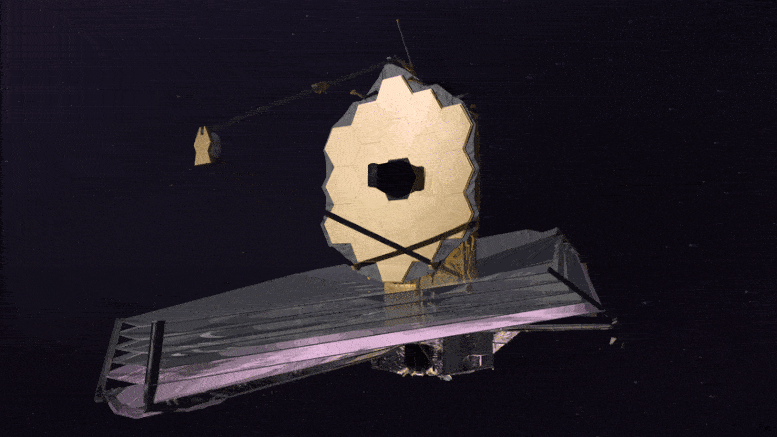
The James Webb Space Telescope (sometimes called JWST or Webb) will study every phase of cosmic history—from within our solar system to the most distant observable galaxies in the early universe.
On December 25, the largest and most powerful space telescope ever constructed by NASA was successfully launched from Earth.With unprecedented technology, the James Webb Space Telescope (JWST) will peer both near and far, from the planets and bodies in our solar system to the deepest reaches of space, where the first stars and galaxies formed more than 13 billion years ago.JWST has a mirror that is 21.3 feet (6.5 meters) across, making it physically much larger than the Hubble Space Telescope and Hubble’s infrared sister telescope, the Spitzer Space Telescope, operated by Caltech’s IPAC; it also has state-of-the-art photon detectors that register a wider range of wavelengths and enable deeper and more detailed views than Spitzer.
After launch, the telescope began a one-month odyssey to its observing perch beyond the moon, an orbital location in space called the second Lagrange point or L2, which is about 1 million miles from Earth.
NIRCam will detect light from the earliest stars and galaxies as they are in the process of formation as well as from populations of stars in nearby galaxies; young stars in our Milky Way galaxy; planets orbiting nearby stars; and Kuiper Belt objects at the fringes of our solar system.
Using a set of coronagraphic masks developed at the Jet Propulsion Laboratory (JPL), which Caltech manages for NASA, to block the bright glare of host stars, Beichman and the NIRCam team will search for Saturn-sized exoplanets orbiting bright, nearby stars including epsilon Eri and Vega.
NASA’s James Webb Space Telescope.The other three are the Mid-Infrared Instrument (MIRI), which will observe the light of distant galaxies, newly forming stars, and faintly visible comets as well as objects in the Kuiper Belt; the Near InfraRed Spectrograph (NIRSpec), which will perform high-resolution spectroscopic observations of 100 cosmic objects simultaneously; and the Fine Guidance Sensor/Near Infrared Imager and Slitless Spectrograph (FGS/NIRISS), which will conduct lower-resolution spectroscopic measurements to characterize the light from the universe’s first stars as well as exoplanets.
Along with a team led by graduate student Michael Zhang (MS ’18), Caltech Professor of Planetary Science Heather Knutson will use the MIRI instrument to study an ultra-hot planet smaller than the earth whipping around a nearby star in an eight-hour orbit.
Other observers are planning to use the MIRI instrument to observe Earth-sized planets in the TRAPPIST-1 system explored by the Spitzer Space Telescope to characterize the atmospheric compositions of potentially habitable Earth-like planets for the first time.In addition to exoplanet studies, Caltech scientists will use JWST to make cosmological measurements and study distant galaxies.
Few stars and no clouds of gas in our galaxy block our view of this area; it was famously imaged by Hubble and Spitzer, and follow-up data from the Keck telescopes and other ground-based observatories were obtained, to study how galaxies are influenced by both their fundamental physical properties and the environment that surrounds them—a kind of study of nature and nurture in galactic development.
“JWST is expected to expand on that work by providing imaging data at unprecedented spatial resolution to study the structure of far-away galaxies and local places of star formation in them, and to find and characterize the very first galaxies in our universe from more than 13.5 billion years in the past,” says Faisst.Beichman emphasizes that JWST is transformative in its capabilities to study a wide range of objects near and far, from those in our solar system to the most distant parts of the universe